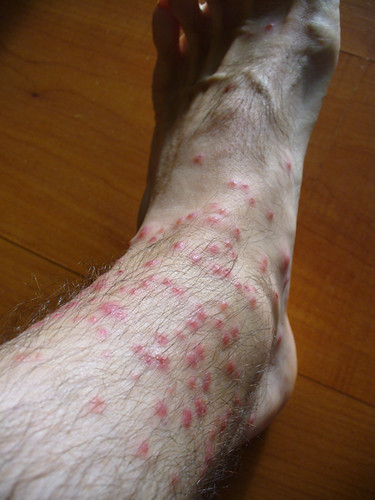Question: Why is this blogpost in Spanish? Porque está este articulo en Castellano?
Answer: I already did this in English, so I suggest you have a look at the previous posts.
A marathon for conservation
Last long run before the marathon for conservation.
Physiology of a Marathon – race strategy for Lima Marathon
Esto es mi primer articulo en castellano en mi blog. Pensé al principio poner esto en el blog de Incaspiza pero me di cuenta que esta lucha que representa correr un maratón para la conservación es demasiado personal. También consideré poner el articulo en mi blog LimaSafaris, pero en ese blog se trata mas sobre reportes de excursiones que hacemos de vez en cuando dirigidos al publico hablahispana para observar naturaleza en las cercanías de Lima. Así, que no tuve otra opción que meter esto donde presentemente tengo más actividad de blogging, aunque hasta ahora todos estos artículos han sido en ingles. Mas adelante seguramente, crearé una nueva pagina con reflexiones en castellano -pero por ahora lo presento esto aquí.
Un maratón para la conservación.
En Estados Unidos para levantar fondos para alguna cause es común hacer lo con “pledges” – que se traduce quizás mejor con “compromisos” – de donar cierta cantidad de dinero contra una prestación. En el mundo de “birdwatching” (observación de aves como hobby) hay Bird-athons en cuales los equipos intentan ver la cantidad más grande de aves en 24h y los amigos y “fans” se comprometen de dar un suma por cada ave vista. El mas famoso es quizás “World Series of Birding” que durante los años ha podido recaudar 8 millones de dólares para la conservación de las aves.
En el mundo de atletismo también hay carreras populares donde los participantes hacen “pledges” para recaudar fondos para causas como SIDA, Leucemia, Cancer, y otras causas loables.
Mi causa
Mi causa es más modesta en cantidades de fondos requeridos, pero no obstante todavía importante. He estado entrenando muy poco tiempo para participar en el Maratón de Lima 42km el domingo que viene (31 de Mayo). Al principio pensé que podría lograr un tiempo de 3 horas y 30 minutos, que me calificaría para el Maratón más famoso del mundo – el de Boston. Sin embargo al entrenar 3 semanas, me di cuenta que mis tiempos y resistencia durante el entrenamiento no iba a alcanzar. Mi esposa me preguntó porque correr entonces. Tenía razón! Correr un maratón no es cosa fácil y hace falta algún estimulo para poder alcanzar una meta. Ahora mi meta parecía inalcanzable. Durante una sesión de entrenamiento se me cayó el idea. Resulta que justamente días anteriores se había celebrado World Series of Birding en EEUU y otros Birdathons estaban denunciados. Me acuerdo que pensé que no seria posible en el Perú simplemente porque no había suficiente observadores de aves. Pero que tal un Maratón de verdad para levantar fondos para un proyecto de conservación y a la misma vez promocionar el eco-turismo a una olvidada zona. Y eso fue lo que presenté en el blog en ingles.
Presentación del lugar que recibe los fondos
Durante mis viajes en el interior del Perú siempre veo que se esta acabando con los bosques con roze y quemas. En el Centro del Peru cerca de Satipo hay excelentes bosques y la gente de la zona han sido consentizados durante nuestras visitas a la zona por parte de Kolibri Expeditions. La mejor area con excelentes bosques de ceja de selva se encuentran entre Mariposa y Carrizal en este mapa de Google.
Ver mapa mas grande
Inclusive llevamos 3 miembros de las comunidades a Mindo en Ecuador para que pudieran ver con sus propios ojos lo que se puede lograr con el ecoturismo. Un video sobre este viaje lo encuentra en:
https://www.birdingperunow.com/Video/Video1.mpg (tenga un poco de paciencia porque pesa 200MB.)
También pueden leer la charla del acalde de Acomayo (Carpish) sobre la vivencia de los comuneros durante el viaje.
https://incaspiza.blogspot.com/2008/08/charla-del-alcalde-de-chincha-carpish.html
Lo que falta es financiamiento y promoción. Por suerte hay una ONG de conservación sin fines de lucro de Estados Unidos que esta coleccionando la plata internacionalmente y que ejecutaran el proyecto – Rainforest Partnership. Su director ejecutivo Niyanta Spelman estuvo aquí en Perú el año pasado y ha visitado a las comunidades.
Pledge – Compromiso.
Los gringos comprometidos están apoyando con un dólar por minuto que bajo de 4horas y 13 minutos – que llegaría ser una velocidad de 6 min/km lejos de mis estipulados 3horas y media (5min/km). Mi razón por escribir esto también en castellano tiene tres objetivos.
1. Pedir de los lectores en Lima apoyar durante el evento este domingo. Necesito algunos voluntarios que podría pasar bebida energética en botellas de plástico en los controles de cada 4 km para así poder asimilar el líquido más efectivo sin tener que parar y perder validos minutos.
2. Levantar el perfil de conservación de los bosques andinos también en el Perú a través de un evento de este tipo. Si conoces alguien de la prensa que quisiera cubrir mi esfuerzo seria maravilloso.
3. Dar la posibilidad de hacer un “pledge” también aquí en el Perú. Para Peruanos estamos hablando en Soles en vez de dólares.
Los diferentes planes serian los siguientes.
- 10 Soles. Me parece que esto es una causa bacán y te apoyaré sea como sea con 10 soles.
- 1 Sol/minuto que puedes cortar de 4 horas y 13 minutos. Lo puedes hacer Gunnar. Por cada minuto más rápido que corres, yo donaría un sol mas. Que tengas esto en tu cabeza todo el tiempo!
- 42 Soles. Eso es un Sol por cada kilómetro. Estas loco Gunnar, pero tienes mi apoyo para cada kilómetro que corres
Si es que puedes donar en dólares mejor todavía. Para darte un idea de que velocidades hablamos aquí están algunos ejemplos.
5.00 min/km da 3:30
5.15 min/km da 3:41
5:30 min/km da 3:52
5.41 min/km da 4 horas
6.00 min/km da 4h13min
Que se haría con la plata?
Desde 2000 que mi empresa Kolibri Expeditions comenzó a llevar observadores de aves (birdwatchers) a la zona, poco a poco la gente se han dado cuenta que el turismo podría dejar algunos beneficios. Hemos traído regalos a la escuela y hemos dado charlas informativas. Culminó todo el año pasado con dicho viaje a Mindo, Ecuador. Ya seria el tiempo perfecto para comenzar a mejorar la infraestructura y para eso seria los primeros fondos.
Hay un salón en la escuela que presentemente se ofrece para pernocte. Hemos apoyado con baños y tubería pero falta mucho que hacer. Se podría implementar con camas y sabanas y hacer divisiones con paredes.
Lo siguiente se puede lograr con diferentes montos.
- 2000$ – Implementar con camas y mejorar baño también con ducha y agua caliente con terma de gas en Apaya entre Mariposa y Carrizal (2350m) y también poner comederos para picaflores como una atracción turística adicional. La comunidad puede de esta manera subir el precio de alojamiento de 5 soles por persona y noche a 20 soles.
- 5 000$ – Lo mismo que lo de arriba y también implementar una casa de Mariposas en Mariposa (sic!). Hay colecta de mariposa no sostenible en las cercanías de Satipo. Con un criadero de mariposas podría ser un importante eco-negocio sostenible y mas adelante una atracción turística
- 10.000$. OK. Estoy soñando pero quien sabe? Con un adicional 5000 dólares se podría comprar los materiales para construir una nueva casa mas apto para albergue en Apaya para turismo y el precio de pernocte puede ser elevado a alrededor 35 soles por noche.
- Con más financiamiento se puede organizar talleres para formar guías locales y entrenar recepción a turistas en Apaya.
Con cada meta que se pueda lograr la presión al bosque disminuyera. Haga su compromiso, en la sección de comentarios de este artículo o escríbeme un correo electrónico a kolibriexp@gmail.com. Estoy viendo la forma como coleccionar donaciones aquí en el Perú. Lo mas seguro que habría una organización independiente que podrían cobrar las donaciones y pasarlos directamente a Rainforest Partnership. Posiblemente, South American Explorer’s Club podrían ser el intermediario neutral y sin lucros. Hagan sus compromisos y yo me comprometo de buscar un intermediario confiable.
La carrera

Lima Maratón - clic para ver un imagen mas grande.
Estaré corriendo junto con otro birdwatcher en Lima – Juan Liziola – que no solo esta participando con una donación, sino también me ayudar mantener un ritmo que se acerca a la necesaria para calificar al Maratón de Boston. No es fácil, pero con el al lado que es mas rápido que yo me va a estimular mantener el ritmo durante 42km. Los primeros 24 km lleva mayormente bajada, pero los últimos 18km son prácticamente todo de subida elevando 110m. Espero ver a los lectores de esta nota, allí en la calle animándonos y algunos voluntarios que nos pasen botellas de bebida rehidrante. El mecanismo para esto no estoy tan seguro todavía, pero se supone que es permitido tener amigos o familiares dando este tipo de apoyo en los controles autorizados para rehidración a lo largo de la ruta. Es sumamente difícil mantener el ritmo corriendo y beber por una copa. El viernes tendría más información, pero en todo caso avísame si puedes apoyar.
Sigueme en Twitter
Otro aspecto de la carrera es que voy a hacer un mensaje por Twitter cada 10km para indicar como estamos avanzando. Esto daría una indicación como nos va la carrera y si estamos manteniendo el ritmo. Si no estas en Twitter todavía – y sobre todo si tienes un iPhone, Blackberry o Smartphone, sugiero que te inscribes en www.twitter.com y me juntas a mi https://www.twitter.com/kolibrix. Aparte de esta utilidad, vas a encontrar varios otros interesantes aspectos del servicio de micro-blog.
Yo usaría un nuevo hashtag #Lima42GE. Los que quieran reportar durante el camino cuando pasamos cierto punto pueden mandar un mensaje a Twitter con el tiempo y el kilometro donde pasamos. Así teniendo una columna “search” por la palabra clave #Lima42GE abierta en Tweetdeck o Seesmic desktop se puede seguir mi maratón en casi en tiempo real en cualquier parte del mundo mientras haya gente que mande los tweets con sus celulares.
He hecho algunos manuales sobre Twitter en el blog (en ingles) que quizás les interesa.
Amigos, nos vemos Domingo 31 de Mayo al partir de las 7 AM en la ruta. Tu apoyo es muy valioso. Go, Gunnar Go!
maratón Lima42K carrera fondista





